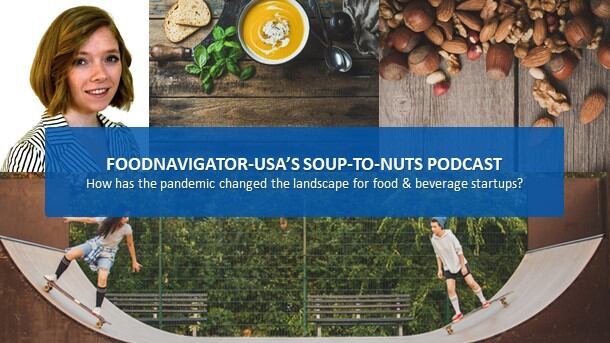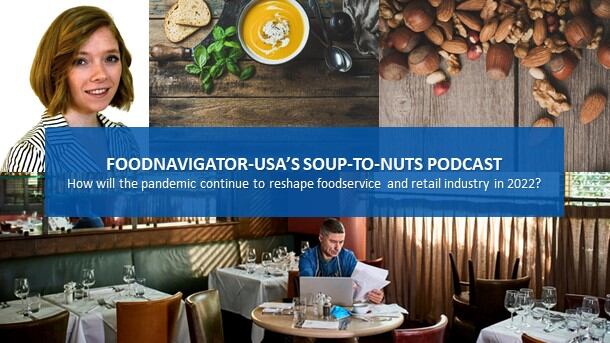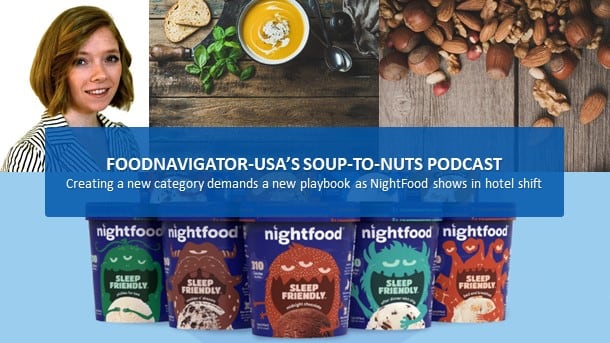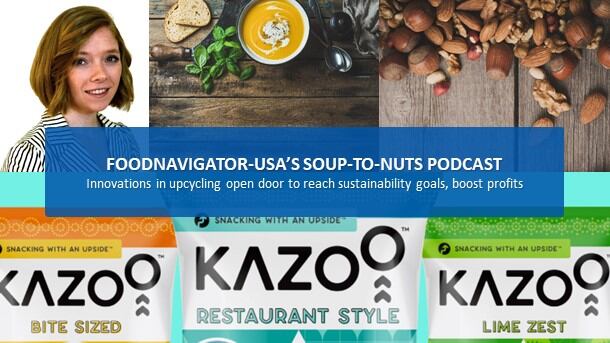According to cultural anthropologist turned business strategist James Richardson, fallout from the ongoing pandemic, including lingering supply chain challenges, shifts in consumer shopping habits and new macro-economic realities, has brought an end to the “glory days of massive expos” where individual entrepreneurs and small startup teams with little more than a prototype could go head-to-head with legacy brands to catch the attention of buyers and score massive distribution or investment.
Richardson, who is also a strategy consultant with Premium Growth Solutions, explains the preference that consumers, retailers, ingredient suppliers and co-manufacturers gave to larger, established brands capable of keeping shelves stocked during the panic buying phase of the pandemic has permanently changed their appetite for and how they evaluate “unknown” startups – making it more difficult for emerging brands to get on store shelves, secure time on shared production lines, and by extension make their case to investors.
At the same time, Richardson adds, the same high-level economic headwinds forcing established brands to raise prices and trim underperforming products from their portfolios are also squeezing industry newcomers, but without the benefit of scale or established consumer demand, many startups have fewer options to protect their margins while simultaneously ingratiating themselves with retailers and shoppers.
But, as Richardson explains in this episode of FoodNavigator-USA’s Soup-To-Nuts podcast, there is still hope for industry newcomers – they just need to be more patient, professional and creative in their approach – strategies for which he outlines in his book, Ramping your brand: How to ride the killer CPG growth curve.
[Editor’s note: Never miss an episode of FoodNavigator-USA’s Soup-To-Nuts podcast – subscribe today.]
An omnichannel approach offers workaround for limited shelf space for startups
One of the most fundamental and impactful consequences of the surge in consumer demand during the first weeks and months of the pandemic was a shift in what retailers were stocking. Initially this was driven by what was available with bigger players having more to offer and small brands suffering more for shortages due to their lack of scale.
But Richardson says this has now become a permanent change, much to the chagrin of emerging brands or entrepreneurs looking for their first big break at retail.
Ongoing labor shortages at retail will reinforce this shift by reducing pressure to restock, Richardson said, explaining that if a brand has more facings – even if it is selling faster – store associates won’t continually need to run to back for more product as they might for a small brand with only one facing.
While this might frustrate some entrepreneurs because it harder to get on shelf, Richardson says it ultimately is better for the CPG ecosystem because it will require a higher degree professionalism and proof of concept before massive distribution – potentially saving entrepreneurs from failing because they grew faster than they could support.
A safer, more sustainable route to market, according to Richardson, is to prove the concept and build an initial following in select retailers or online where competition isn’t as cut-throat before approaching
One way to do this is direct-to-consumer on online, which allows brands to create and leverage their own media channels where they can connect with shoppers without fear that an established brand will swoop in and steal their space or access, Richardson says.
Overcoming online retail challenges
While building a new CPG business online may be easier in some respects than breaking into brick-and-mortar, it certainly has its challenges, including shipping costs and logistics.
But, Richardson says, these are manageable if planned for appropriately. For example, bundling products into orders that are large enough to justify ‘free’ shipping will alleviate margin pressure, even for the heaviest of products.
Another limitation for online is maintaining temperatures for fresh and frozen, which Richardson described as “brutal” and symptomatic of a larger unexpected consequence of the pandemic for startups.
He says he hasn’t seen anyone break even with DTC for frozen and refrigerated products before reaching $10m in sales, which means entrepreneurs likely will need to fundraise more earlier to float them to that first major milestone.
Co-packers are raising the stakes
Another unexpected side-effect of the pandemic that is negatively impacting early stage growth companies is booking time at co-manufacturers and -packers is now more difficult and more expensive.
Richardson explains that the initial surge and now ongoing labor challenges at factories mean larger players are leaning more heavily on production partners to fill orders – edging out brands with smaller runs.
Increased production expenses are far from the only cost increases with which CPG companies – large and small – are grappling as inflation continues to rise. However, unlike established CPGs who have “privilege” of passing additional costs to consumers through price increases, retailers and shoppers will have less of an appetite for this from emerging brands.
The good news, according to Richardson, is emerging brands are in their own price universe and may not need to raise prices to preserve their margins to the same extent that larger players need to. But, he says, they still need to take care when setting them.
As he explains in this his book, entrepreneurs need to set a premium price that eliminates the “thoughtless random buyer and encourages people to actually look at the package and read the symbolism and understand why they’re paying this much more.”
And while Richardson says he isn’t a huge fan of using pricing promotions to drive trial, that strategy can be effective when demos or other options are sidelined. In particular he says that volume based sales that allow consumers to buy two for the price of one are effective for both the brand and retailer.
Finding funding in economically challenging times
Another trend that has emerged in the past two years that may appear harmful for startups on first blush but is actually a blessing in disguise, according to Richardson, is a drop in venture capital and private equity funding for early stage businesses.
He explains that the checks for $2-5m that were “going pretty freely” in the 2010s “just don’t seem to be happening nearly as much,” as many people are doubling down on earlier investments. Likewise, he says, venture capitalists appear to have raised the minimum revenue for their earliest investments.
But this isn’t necessarily bad as it forces entrepreneurs to be more efficient with their funds, get to know their consumers and finetune their positioning before the scale – improving their odds of long term success.
Richardson says this also is better for the eco-system because it will discourage me-too products that have flooded the food and beverage industry in recent years and instead allow innovative products to shine and eventually access the capital they need to grow.
This doesn’t mean companies need to bootstrap, Richardson said, noting that angel investors still appear active and crowdfunding is becoming a more popular and viable route to the small amount of capital that most early stage companies need.
Ultimately, all of these challenges – while uncomfortable and disruptive – are manageable, according to Richardson, but, he says entrepreneurs will need to be more patient, more thoughtful about their research and product development and more professional in how they present themselves to buyers, consumers and potential investors.
For more details on how to grow a brand exponentially, manage money and navigate the startup world, Richardson’s book, Ramping your brand: How to ride the killer CPG growth curve, is packed with case studies and advice and is available on Amazon.




